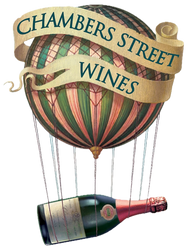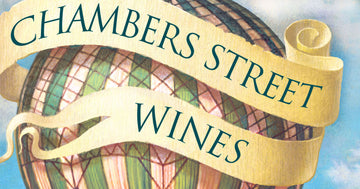Auvergne Legends: Jean Maupertuis and Marie et Vincent Tricot

Over the years, the natural wine world has been developing a thirst for wines from the Auvergne, a rural region nestled in the center of France, with Clermont-Ferrand as its major city. The area is known to most French people as a great region for camping, and cheese. Indeed, the mountain ranges, and over 300 dormant Volcanos provide the setting for plenty a scenic vista, and the cheese production from the Auvergne accounts for over 1/4 of France's entire output. If you ask an avid Parisian natural wine fan about the Auvergne, camping and cheese will be afterthoughts to the singular wines from the area. The soils are a patchwork of granite, limestone, sand, basalt (sandstone) of several colors - including the rare pink basalt - volcanic rocks, and some clay. This already lays the groundwork for some very special flavor profiles, with the operative word being "Volcanic." On top of this, there is the region's special Gamay D'Auvergne, which is distinct from other types of Gamay found in Beaujolais or the Loire Valley, for example. Gamay D'Auvergne is known to yield darker and spicier wines than its cousins, Gamay de Bouze or Gamay Noir à Jus Blanc (the Beaujolais Gamay). Though there used to be hundreds of Gamays in France, according to Julien Guillot from Vignes du Mayne in the Maconnais, now there are less than 10, with Gamay D'Auvergne and Gamay Tinturier perhaps being the rarest. The final detail that contributes to the Auvergne obsession of our Parisian friends is the fact that production is minimal at best. Wines from Patrick Bouju (La Boheme), Aurelien Lefort, Pierre Beauger, Vincent Marie (No Control) and our eccentric friend Fred Gounan (L'Arbre Blanc), are extremely hard to come by, and are often completely unavailable in the US. When I visited Patrick Bouju several years ago, he had only two large barrels of wine from his Auvergne parcels. This was not an exception, but rather the rule here.
The Auvergne was historically a large wine producing region in France, before Phylloxera decimated the vineyards of Europe. It was at one point the third largest wine producing region in France, with the Allier river serving as a route north to Paris. With the advent of railroads, which became the preferred method of transporting wine, production started to curb, replaced by wines from Provence and other up and coming regions. After the First World War, many yougner people moved to industrial hubs, and north to Paris, leaving behind family vineyards and farms. The Michelin company also contributed to the downturn in wine production, as their factory and headquarters in Clermont-Ferrand pulled many agricultural workers from their family plots and into industrial work. Jumping to the late 90s and early 2000s, we begin to see a very quiet and slow appearance of small estates, with two legendary domaines setting the stage for the slew of young vignerons whose wines are now all the rage in Paris. Jean Maupertuis, and Marie and Vincent Tricot are the names to know. Both producers have been mentors to many young winemakers in the region, and their wines are a must try for fans and Auvergne-curious wine drinkers. It seems clear that there isn't a producer of natural wines in the Auvergne who hasn't worked with or been influenced by these estates. Both Jean Maupertuis and the Tricots were inspired by the "first generation" of natural winemakers, most notably Marcel Lapierre, Jean-Francois Ganevat, and the like. The approach of working with little or no SO2 and fermenting only with indigenous yeast was clearly paramount. The step of looking for vines and settling down in the Auvergne is perhaps the questionable one, as the region is generally unkown as a wine-making region, even to French natives. Questionable as it was, we are all very grateful now, as the unique Volcanic soils provide for some of the most distinct wines of the country.
Today marks the arrival of several new wines from Maupertuis and the Tricots. Often trickling in at different times of the year, the timing was ideal this year, with an exciting batch of wines arriving simultaneosly from both producers! We are very happy to have a chance to share these legendary wines in one offer. Supplies are limited, as always, so don't hesitate if you have been wondering what all the fuss is about the Auvergne. Aside from the natural wine scene in Paris or a local Bistro around Clermont-Ferrand, this is one of the only chances we'll get this year to sample the magic!
-Eben Lillie


